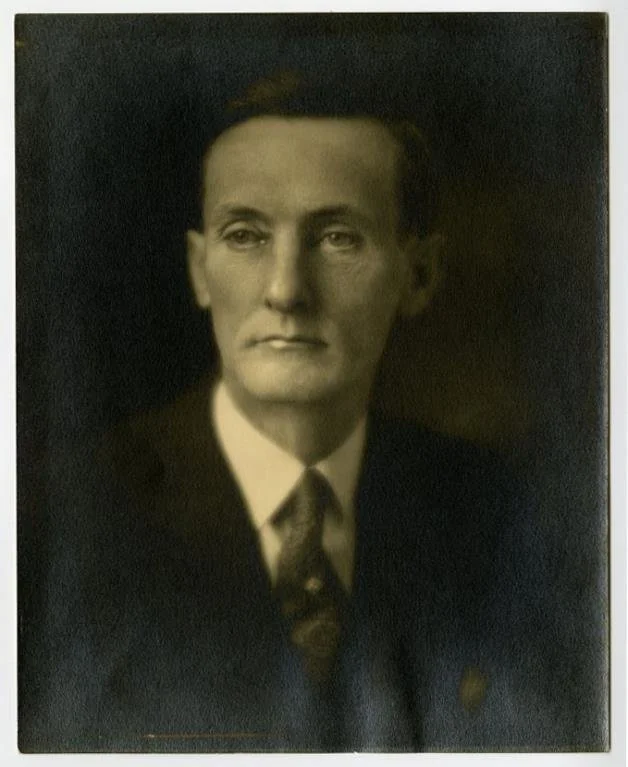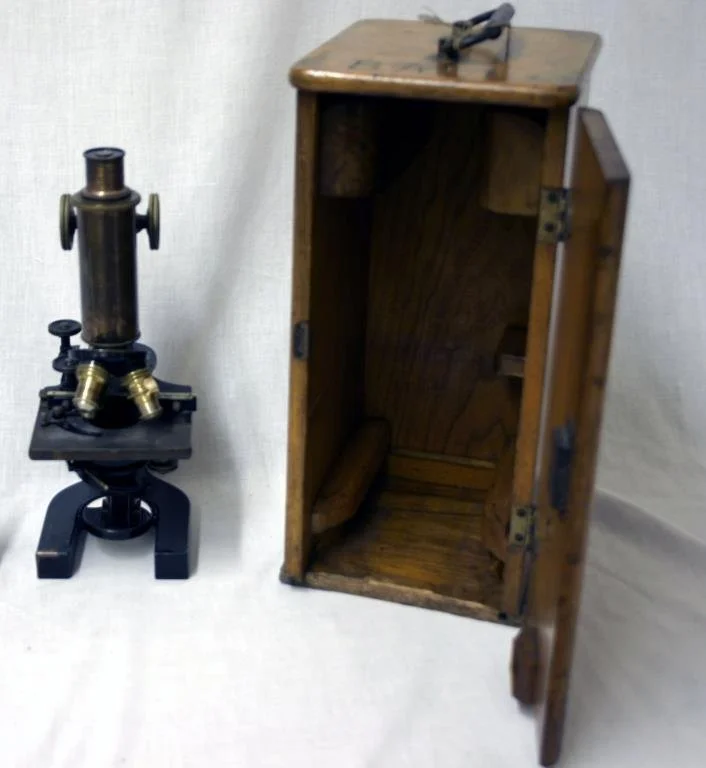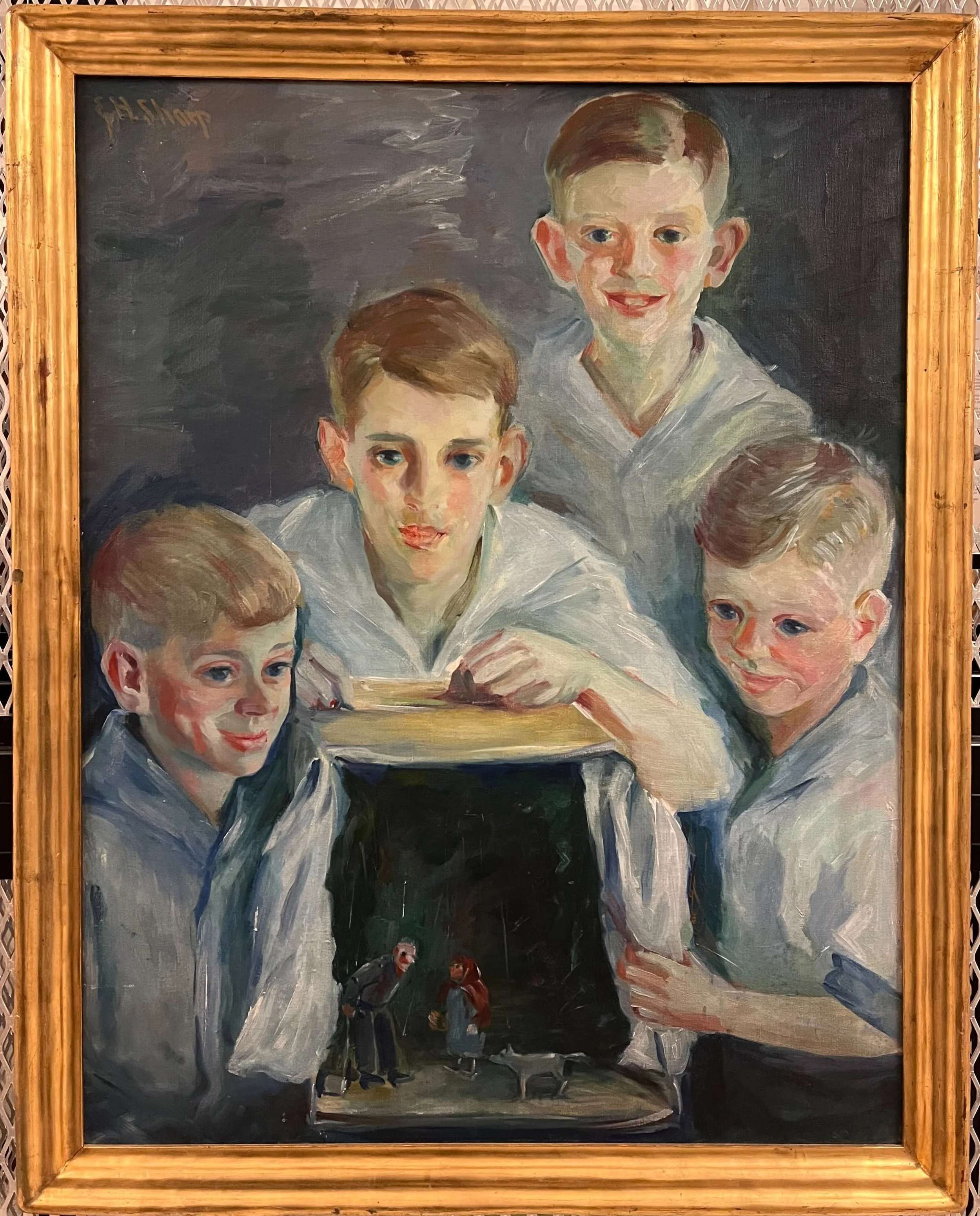Paging Dr. Ball!
Dr. Clay Ball, c. 1940s, Minnetrista Heritage Collection
Decades before the Buffalo Ball brothers moved to Muncie in 1887 to start their glass manufacturing company, there was another prominent Ball family in the area. Samuel P. Ball (1813-1891) and Rebecca A. Mansfield (1816-1882), both originally from Ohio, moved to and married in Delaware County in 1837. Pioneer residents of the area, the couple had nine children between 1837 and 1858. One of these children, George M. Ball (1844-1879), would later marry Susan R. Hale (1850-1932). Over a ten-year period, George and Susan had six children. Their eldest son Walter L. Ball (1869-1938) became a state senator, and their middle son Claude C. Ball (1873-1957) became a Superior Court judge. Their youngest son Clay A. Ball (1877-1980) was a prominent Muncie physician, and Minnetrista is fortunate to have a number of items owned and used by him in our collection.
Originally trained as a teacher, Clay Ball taught at a one-room schoolhouse in southern Delaware County for two years before earning degrees at Indiana University and the Medical College of Indiana, Indianapolis. After graduating medical school in 1906, Ball moved to Muncie and opened his first office above the bank at Mulberry and Main streets. In 1907, he and two other doctors established Muncie’s first hospital at Adams and Mulberry streets. In 1913, Dr. Ball left for a three-month period of study at the New York Post Graduate Medical School. When he returned to Muncie, he established his own practice at High and Jackson streets. Three years later, he met his wife, Helen Mauck (1886-1984), while vaccinating her against smallpox. The couple married that same year and purchased a house at Adams and Franklin streets to serve as both doctor’s office and family home. While the family would eventually outgrow this house, Dr. Ball maintained his office there until he retired in 1971 at the age of 93. He also practiced medicine at Ball Memorial Hospital once it opened in 1929. Dr. Clay Ball was named Indiana Physician of the Year in 1956.
Here are just a few of the items in the Minnetrista Heritage Collection related to Dr. Clay Ball’s medical practice in Muncie – a doctor’s bag (c. 1930) to carry medical instruments, a Bausch & Lomb microscope (c. 1912) to analyze collected samples, and obstetrical forceps (c. 1930) to assist in the delivery of babies.
Clay and Helen Ball had four sons between 1917 and 1924. All four sons would establish successful careers in law, medicine, and engineering. Seen here is a portrait of these Ball brothers painted by local artist Everett Hill Sharp in 1929. This painting was donated to Minnetrista in 2022 by Thomas Ball, son of Philip and grandson of Clay.
Portrait of James, Edward, Philip and Harold Ball, 1929
Dr. Phil Ball, Minnetrista Heritage Collection
Both W. Philip Ball (1919-2016) and Harold C. Ball followed in their father’s footsteps by becoming doctors. However, Phil was the only one to stay in the Muncie area. A graduate of Muncie Central High School, Ball State Teachers College, and Indiana University, Dr. Phil Ball practiced medicine in Muncie for 43 years and taught medical students at Ball Memorial Hospital. Dr. Ball received national recognition when he delivered testimony during a U.S. Senate hearing on side effects related to the mega-dose birth control pill in 1970. After his testimony, new FDA regulations significantly reduced the hormone content of the pills. In 1992, the Indiana Chapter of the American College of Physicians named Dr. Ball Internist Laureate. In addition to his medical career, Phil Ball was a humorist and published writer for more than 50 years. He wrote local newspaper columns and books under the pseudonym Charles F. Coldwater, M.D., and he even pre-wrote his own obituary.
Dr. Phil Ball married Esther A. Ebrite (1918-2015) in 1943 while they were both assisting with war efforts. Phil served as a medical officer in the Navy, and Esther worked in Washington, D.C. as a cryptographer at the FBI and a military intelligence researcher at the Pentagon. After World War II ended, the couple returned to Muncie and had three children. Dr. Phil and Esther Ball were very generous to Minnetrista over the years, donating both their time and their family treasures. To read more about Phil and Esther’s contributions, check out our previous blog.
Pictured here are some of the items Dr. Phil Ball donated to the Heritage Collection from his medical career – a doctor’s bag (c. 1970) to carry medical instruments, a laryngoscope for examining the larynx or voice box, a stethoscope (c. 1955) for listening to internal body sounds, and a head mirror (c. 1960) to illuminate the ear, nose, and throat.
Want to see some of these items for yourself? Starting on April 1, 2023, you can! Our upcoming exhibit in the Heritage Gallery will feature the recently donated Everett Hill Sharp portrait of Clay Ball’s sons as well as the doctor bags of Drs. Clay and Phil Ball.









